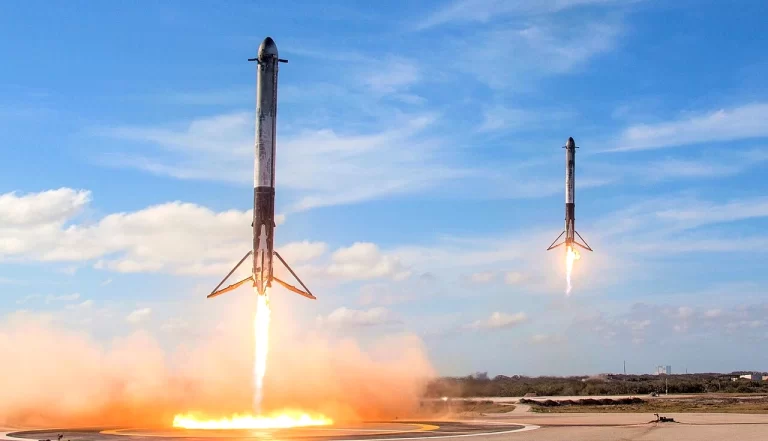 In the ever-evolving aerospace industry, Lockheed Martin’s investment in hypersonic technologies marks a significant leap toward redefining the future of aviation and defense. Hypersonic vehicles, capable of exceeding Mach 5 (five times the speed of sound), promise to revolutionize global travel, logistics, and even national defense. Lockheed Martin, a leading aerospace and defense corporation, recognized this potential early on and made a strategic decision to invest heavily in hypersonic technologies.
In the ever-evolving aerospace industry, Lockheed Martin’s investment in hypersonic technologies marks a significant leap toward redefining the future of aviation and defense. Hypersonic vehicles, capable of exceeding Mach 5 (five times the speed of sound), promise to revolutionize global travel, logistics, and even national defense. Lockheed Martin, a leading aerospace and defense corporation, recognized this potential early on and made a strategic decision to invest heavily in hypersonic technologies.
This business case study delves into the strategic decisions, challenges, and outcomes associated with Lockheed Martin’s ambitious venture into hypersonic technologies, providing insights into the competitive landscape and the broader implications for the industry.
A Legacy of Innovation: Unveiling Lockheed Martin
Lockheed Martin boasts a rich history dating back to 1912. Lockheed Martin, a global aerospace and defense giant headquartered in Bethesda, Maryland, has a storied history of innovation and excellence. With annual revenues exceeding $65 billion and a workforce of over 110,000 employees, Lockheed Martin is a powerhouse in the aerospace sector, renowned for its cutting-edge technologies and strategic foresight.
Over the decades, the company has established itself as a titan in the aerospace industry, delivering iconic aircraft like the F-16 Fighting Falcon and the F-35 Lightning II. They’ve also played a crucial role in space exploration with projects like the Orion spacecraft and the James Webb Space Telescope.
This relentless pursuit of innovation led them to identify hypersonics as a game-changer. Traditional jet engines struggle to achieve hypersonic speeds due to the immense heat generated. Lockheed Martin needed a solution that could overcome this limitation.
Hypersonic Technologies Challenge: Staying Ahead in a Competitive Landscape
The aerospace and defense sectors are characterized by rapid technological advancements and intense competition. As geopolitical tensions rise and defense budgets increase, nations are seeking superior technologies to gain strategic advantages. The primary challenge facing hypersonic development is thermal management.
As a vehicle travels faster, air friction increases dramatically, generating scorching temperatures that can melt conventional materials. Additionally, hypersonic propulsion systems require significant technological breakthroughs to achieve sustained high speeds efficiently. Hypersonic technologies, which enable flight at speeds exceeding Mach 5, offer unparalleled potential for both military and civilian applications, including faster travel, enhanced missile systems, and advanced surveillance capabilities.
Lockheed Martin recognized the imperative to lead in this emerging domain. The primary challenge was not only the development of hypersonic technologies but also ensuring their feasibility, affordability, and integration into existing systems. The company faced significant technical hurdles, including material science, propulsion systems, and thermal management, all of which required substantial investment and innovation.
These hurdles presented a significant roadblock to realizing the full potential of hypersonic technology.
Soaring High: Lockheed Martin’s Hypersonic Solutions
Lockheed Martin’s approach to overcoming these challenges was multifaceted, involving significant financial investment, collaborative partnerships, and leveraging its deep expertise in aerospace engineering. The company allocated over $2 billion in R&D funding toward hypersonic projects, focusing on three key areas:
- Material Innovation: Developing materials capable of withstanding extreme temperatures and pressures experienced during hypersonic flight. Lockheed Martin’s Skunk Works division played a crucial role in creating advanced composite materials and heat-resistant alloys.
- Propulsion Systems: Designing propulsion systems that can efficiently operate at hypersonic speeds. The company made significant advancements in scramjet (supersonic combustion ramjet) technology, which uses the vehicle’s high speed to compress incoming air before combustion.
- Integrated Systems: Ensuring seamless integration of hypersonic technologies into existing defense systems. Lockheed Martin developed sophisticated guidance and control systems, enhancing the accuracy and reliability of hypersonic vehicles.
One prominent example of Lockheed Martin’s hypersonic endeavors is the SR-72, a next-generation reconnaissance aircraft capable of reaching Mach 6. This unmanned vehicle leverages advanced design features and materials to manage heat, enabling unrivaled high-speed intelligence gathering.
Results and Benefits: Leading the Hypersonic Technologies Race
Lockheed Martin’s investments began to yield tangible results by the early 2020s. The company successfully demonstrated several hypersonic prototypes, including the Hypersonic Air-breathing Weapon Concept (HAWC) and the AGM-183A Air-launched Rapid Response Weapon (ARRW). These milestones positioned Lockheed Martin as a leader in hypersonic technology, attracting significant contracts from the U.S. Department of Defense.
The benefits of these advancements are multifaceted:
- Strategic Advantage: Hypersonic weapons provide unmatched speed and maneuverability, making them difficult to detect and intercept, thus offering a strategic edge in modern warfare.
- Economic Impact: The successful development of hypersonic technologies opens new markets and revenue streams, reinforcing Lockheed Martin’s financial stability and growth prospects.
- Technological Leadership: Lockheed Martin’s breakthroughs set industry standards, establishing the company as a benchmark for innovation in aerospace and defense.
Competitors: Following the Hypersonic Trail
Lockheed Martin’s success in hypersonics spurred other major aerospace and defense companies to accelerate their own efforts. Notable competitors include:
- Boeing: Investing heavily in hypersonic research, Boeing has developed its own hypersonic demonstrators and is working on advanced propulsion systems.
- Northrop Grumman: Partnering with DARPA and the U.S. Air Force, Northrop Grumman is developing hypersonic vehicles and missile systems.
- Raytheon Technologies: Focused on hypersonic missile defense systems and collaborating with various defense agencies to advance hypersonic technologies.
Landing the Conclusion: Business Lessons Learned
Lockheed Martin’s case study offers valuable lessons for businesses of all sizes. It demonstrates the power of:
- Visionary leadership: Identifying strategic opportunities and making bold investments in emerging technologies.
- Innovation: Continuously pushing technological boundaries to develop solutions for future challenges.
- Risk-taking: Embracing calculated risks to gain a competitive advantage in a rapidly evolving market.
By combining these elements, Lockheed Martin has positioned itself as a leader in the hypersonic race. This technology has the potential to reshape the world, and Lockheed Martin is at the forefront of this exciting revolution.



